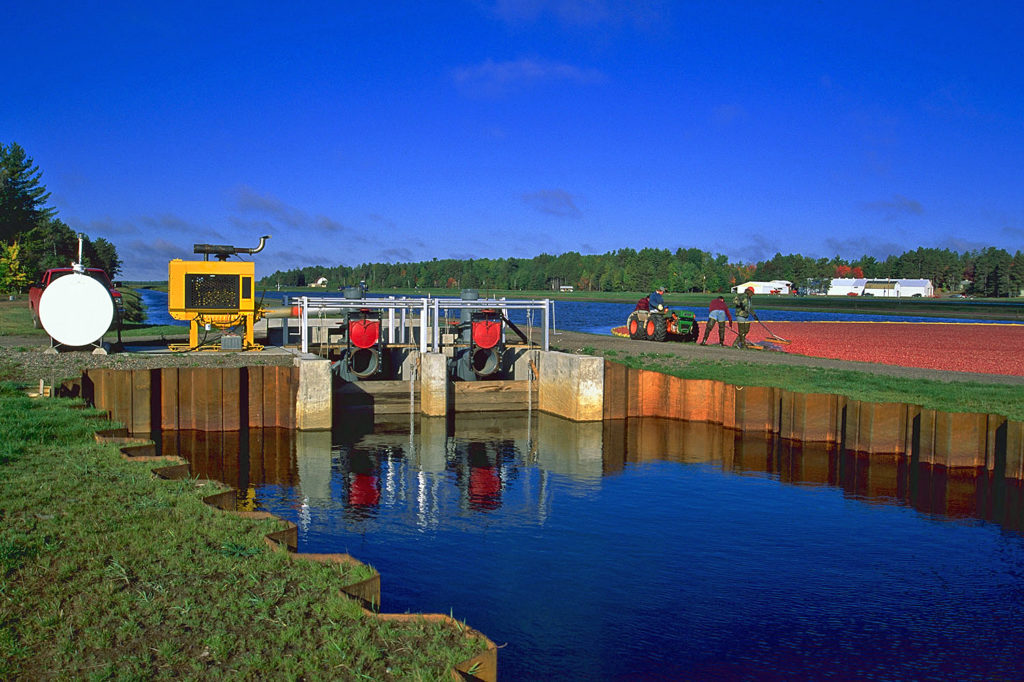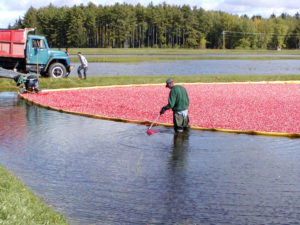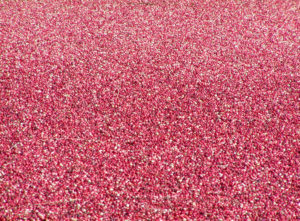Cranberries Depend on Water Resources

Dams serve a range of organizations in a variety of locations. They store water, control floods, provide irrigation, supply hydropower, reduce sedimentation – the list of uses for this scalable water resource structure goes on and on. It’s hard to miss a big dam on a big river. But you can find small dams doing the same sort of water control work in many places, including the bogs where cranberries are grown.
Cranberry Country
Wisconsin is the nation’s leading producer of cranberries, according to the Wisconsin State Cranberry Growers Association, producing more than 60% of the U.S. crop. These tart berries thrive in Wisconsin’s sand/peat marshes and are grown on 21,000 acres across the state. Harvest occurs from late September through October and typically is documented by images of growers, knee deep in bogs, corralling the eye-popping reds of a good harvest.
Cranberries and Water
 This may come as a shock, but cranberries don’t grow in water. Instead, they develop in sandy bogs and marshes, referred to as vine beds, growing on low-running vines. Outside of standard irrigation, water really comes into play during harvest and in preventing winter damage.
This may come as a shock, but cranberries don’t grow in water. Instead, they develop in sandy bogs and marshes, referred to as vine beds, growing on low-running vines. Outside of standard irrigation, water really comes into play during harvest and in preventing winter damage.
Cranberries contain small air pockets. At harvest time, growers flood the vine beds/bogs with about 8 to 10 inches of water, causing the cranberries to rise to the surface and simplifying the harvesting process. The same flooding process is used to protect the cranberry plants from cold Wisconsin winters. Encasing the plants in a layer of ice eliminates wide temperature fluctuations and the drying effect of exposure to high winds.
Water Control is Key
 Ayres Associates commonly assists cranberry growers with wetland delineation, permit assistance, water budget (how much water comes into and out of an area), and water control structure design. Just like municipalities and utilities, growers need to effectively manage their water supply, both in drought and excess, and the same set of engineering principles applies for all. Growers count on being able to flood their vine beds, which can be hundreds of acres, and a stable water budget makes that possible. The cranberry market is variable, making plans for large infrastructure improvements difficult, so when upgrades are necessary, it helps to be able to respond quickly and efficiently. From juice to electricity, dutiful and durable water control structures make it possible.
Ayres Associates commonly assists cranberry growers with wetland delineation, permit assistance, water budget (how much water comes into and out of an area), and water control structure design. Just like municipalities and utilities, growers need to effectively manage their water supply, both in drought and excess, and the same set of engineering principles applies for all. Growers count on being able to flood their vine beds, which can be hundreds of acres, and a stable water budget makes that possible. The cranberry market is variable, making plans for large infrastructure improvements difficult, so when upgrades are necessary, it helps to be able to respond quickly and efficiently. From juice to electricity, dutiful and durable water control structures make it possible.
For more information about our work with water control structures, reach out to our water resources group.

Post a comment: